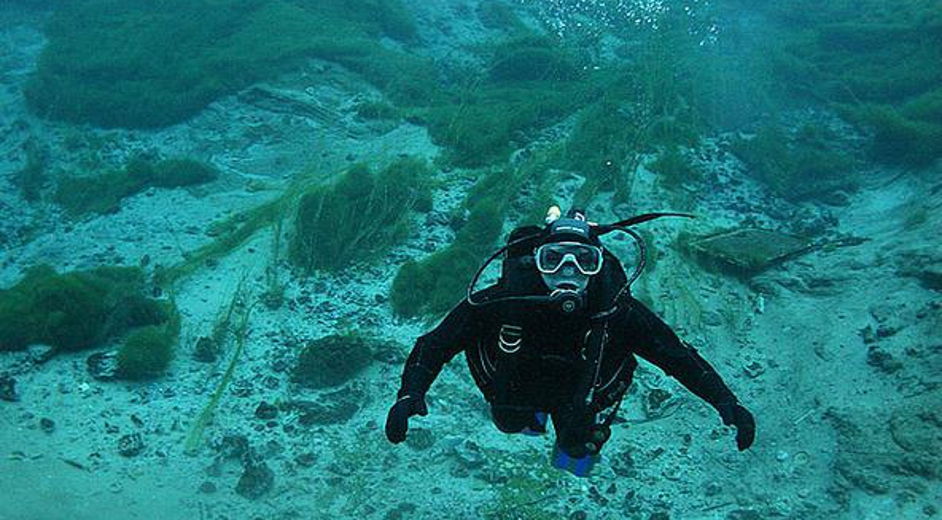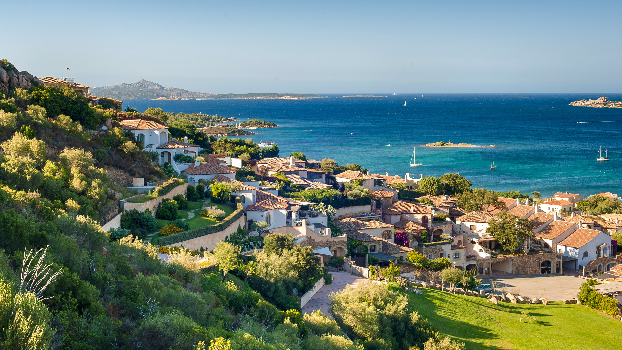1. Capo Testa
Located in the north of Sardinia on the Maddalena Archipelago, the diving grounds off the peninsula of Capo Testa are renowned for their clear, calm water and suitability for experts and relative beginners alike. You don’t need to descend too far into the magical turquoise depths before you come into contact with wild and wonderful flora and fauna including eels, lobsters, red stony coral and even the occasional turtle. Divers can also make contact with ancient civilisation, as the remains of an ancient Roman column sit under the water. Altogether, the shifting light spectrum and 50m visibility makes Capo Testa an incredible undersea experience, while ease of access give you plenty of time to make the most of it - most diving centres can take you by boat to the diving grounds in around 15 minutes.
Top tip: Look out for the wreck of St. Teresa di Gallura, which is sunk between 15 – 50 feet below the surface. Now broken up, it is easy to get into and explore.
2. Orosei Gulf
Home to the famous Bue Marino caves, the Orosei Gulf also plays host to many diving sites that are great for all levels of divers. The 45m Nasello wreck is of particular interest, a World War 2 casualty that now rests gently on the sandy seabed. Elsewhere, Bianka’s Garden has a depth of 16 meters and as the name suggests, looks much like a watery garden with lush sea flora sprouting from the sea bed. This site also contains an ancient volcanic lava flow that slopes down to a depth of about 24 meters and swirls in a labyrinth of canyons and crevices.
Top tip: If you have never tried cave diving, the Cavern of the Oysters is a vast natural wonder festooned with ancient oyster fossils and widely recommended as a gentle first step into this type of underwater adventure.
3. Capo Carbonara
Known by some as the Gulf of Angels, the south of Sardinia is home to the protected marine area of Capo Carbonara. The wreck of the Relitto del LT221 was sunk after a mine explosion and now provides a habitat for various fishy inhabitants. Secca di Torre delle Stelle is an impressive area that comprises of huge stacked granite boulders that support several kinds of fish that are not commonly seen on the island, such as bream, damsel fish, barracudas, and the all so rare sunfish. Part of the imposing structure of boulders includes a system of tunnels and caves that make diving in the area all the more fascinating.
Top tip: This area is also a favourite haunt of dolphins, especially around Sepentara Island, if you’re looking for encounters of the bottle-nosed kind.
4. San Pietro
An even smaller island on the southwest side of Sardinia, San Pietro is surrounded by beautiful unpolluted waters and is relatively unknown in comparison to the main diving grounds in Sardinia. Diving is available around Le Colonne, Punta Grossa and Punta Oche with local diving centres, and you can expect to see everything from relics and statues to intriguing naturally formed rocks on your journey.
Top tip: This area is famous for the enormous tuna fish that inhabit the waters: head to the waters around La Tonnara, the old tuna fishery, which is considered a real highlight of any diving holiday in Sardinia.
5. Sant’Antioco
Another island that isn’t exactly Sardinia, but is very close by, is Sant’Antioco just south of San Pietro. This is the place to go to experience incredible wildlife: bluefin tuna is quite abundant, and although rarer, highly prized sightings of bottlenose dolphin and giant mantas are also possible. The underwater meadows of Posidonia Sea grass make you feel as though you are in one large garden that supports all sorts of underwater life that you would not otherwise see. This island too, has fantastic naturally formed rocks in all sorts of shapes that divers of all levels can experience and enjoy.
Top tip: Even among the natural splendour of this island, the hidden sandy cove of Cala Lunga stands out. Located along the coast from Nido dei Passeri, it is largely undiscovered by holiday crowds, and is popular with scuba divers for the incredible underwater world located just off shore.







 10
10
 5
5
 5
5



